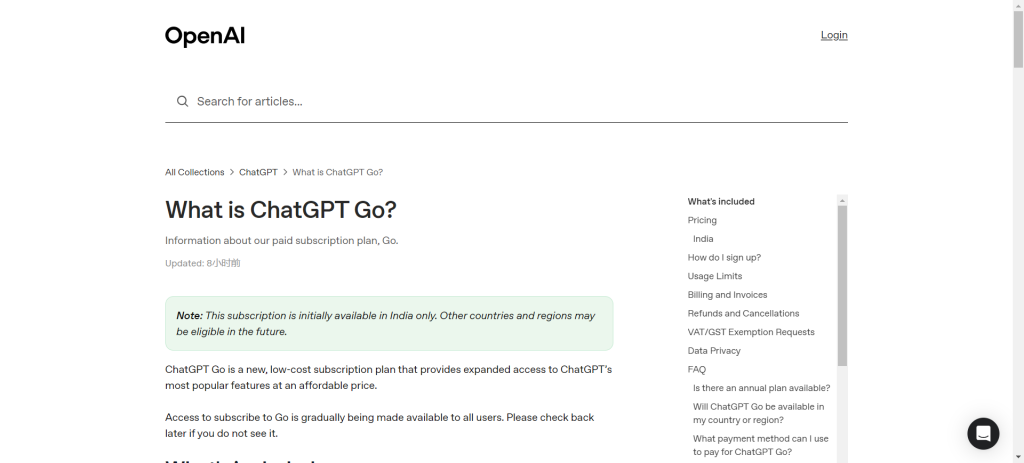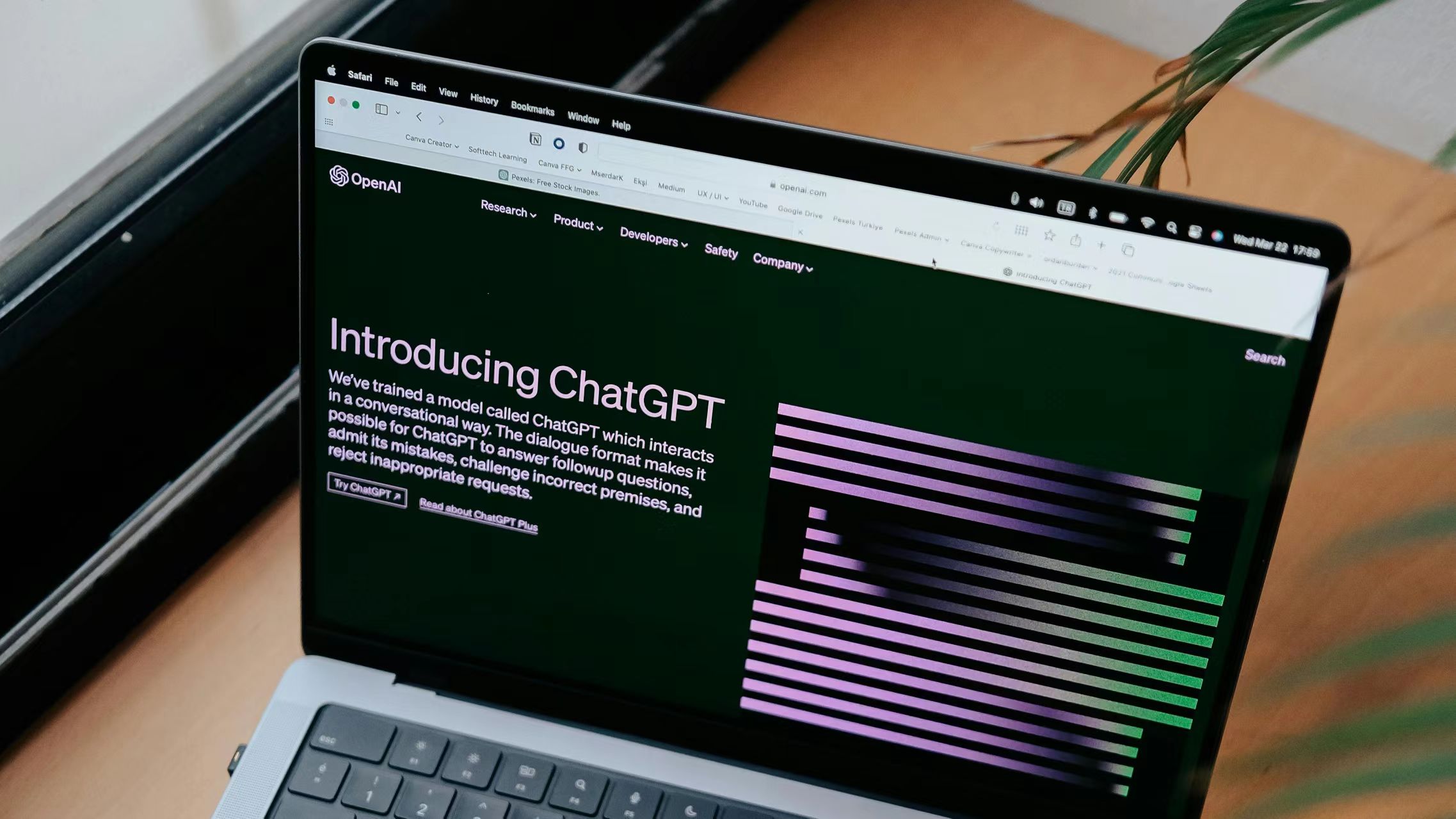Last Updated on August 21, 2025 by Leslie
Introduction About ChatGPT India
At GStory, we follow the latest AI trends closely. Recently, OpenAI introduced a new subscription tier called ChatGPT Go, launched exclusively in India. This move has sparked global conversations not only about pricing, but also about OpenAI’s market strategy. In this article, we’ll break down what ChatGPT Go Plan is, what it offers, and what it means for the future of AI adoption worldwide — through GStory’s perspective.

What is ChatGPT Go?
At its core, ChatGPT Go Plan is a new subscription plan designed specifically for the Indian market. It sits strategically between the free and premium tiers, created to be both affordable and high-value. Its primary goal is to lower the barrier to entry for AI services, enabling millions of new users to access advanced AI capabilities without the high cost of the standard ChatGPT Plus plan.
Pricing and Key Features
Priced at just ₹399 per month (approximately $5 USD), the ChatGPT Go Plan India is a highly competitive offering. A key feature of the ChatGPT Go subscription is its support for UPI, India’s popular unified payment interface, which makes subscribing frictionless for local users.
The plan comes with impressive features that make it a compelling upgrade from the free tier. In addition to all the free tier’s functionalities, ChatGPT Go provides:
- Expanded access to GPT-5: Allowing users to utilize OpenAI’s flagship model more frequently.
- Extended access for image generation: Enabling users to create more images for work or leisure.
- Expanded file upload access: For analyzing and processing more documents and spreadsheets.
- Longer memory duration: Provides more personalized and coherent responses through an extended context window.
- Access to Projects, Tasks, and custom GPTs: Tools that help users organize their work, track progress, and build personalized AI assistants with greater flexibility.
It’s important to note that while Go is an affordable upgrade, it does not include some of the more advanced features reserved for higher-tier plans like ChatGPT Plus and Pro. This includes access to legacy models like GPT-4o, third-party connectors, and Sora video creation tools.
Comparison ChatGPT India Price: Go vs Free vs Plus
| Plan | Price | Model | Usage Limits | Memory | Best For |
| Free | $0 | GPT-4 (limited) | Basic | Standard | Casual users |
| Go | ~$5 (₹399) | GPT-5 | ~10× Free | Double | Cost-sensitive users who need more power |
| Plus | $20 | GPT-5 (full) | Highest | Expanded | Power users, professionals |
At roughly one-fourth the price of ChatGPT Plus, ChatGPT Go provides a cost-effective way for users to access GPT-5 and advanced features without committing to the full premium subscription. This stark price gap highlights Go’s role as a highly accessible entry point for cost-sensitive users.
Why is the ChatGPT India Price the lowest ?
India’s selection as the launchpad for this new plan is no accident. The country offers a perfect combination of factors that make it an ideal “testbed”:
- Massive User Base: India is home to a vast and rapidly growing population of internet and mobile payment users.
- Price Sensitivity: The market is highly price-sensitive, and a low-cost plan is crucial for attracting a large-scale user base.
- A Strategic Entry Point: By establishing a strong presence in India, OpenAI can gain valuable insights and a competitive edge against other tech giants like Google, which has a deeply entrenched user base in the country.
How to Get Cheaper ChatGPT Go Subcription Outside India
ChatGPT Go is an official subscription plan launched by OpenAI and is currently exclusively available in India. It is not possible to purchase or access it from outside the country.
OpenAI’s official documentation states that this plan is only offered in India and will be rolled out to all Indian users gradually. While OpenAI has hinted at a potential expansion to other regions in the future, there is no official timeline for a global release.
Although some online communities discuss potential workarounds, it is important to understand the risks involved, as these methods can violate OpenAI’s terms of service and may lead to your account being banned.
Common methods discussed online (at your own risk):
Using a VPN:
How it works: A VPN (Virtual Private Network) can make your internet traffic appear as if it’s coming from an Indian IP address, tricking OpenAI’s systems into showing you the regional offer.
Steps:
Subscribe to a reputable VPN service (e.g., ExpressVPN, NordVPN).
Connect to a server located in India.
Clear your browser’s cache and cookies, or use an incognito/private window.
Log in to your ChatGPT account and check if the ChatGPT Go option appears on the subscription page.
The catch: Even if you successfully see the plan, you’ll still need an Indian payment method to complete the subscription.
Payment Restrictions:
A major roadblock for non-Indian users is the payment system. ChatGPT Go primarily supports India’s UPI (Unified Payments Interface) and Indian-issued credit cards, making it very difficult for foreign users to complete the transaction.
Your foreign-issued credit card or payment account will likely be declined, even if you manage to access the page with a VPN.
In conclusion, to purchase ChatGPT Go, you would need a VPN to simulate an Indian IP address and an Indian-issued bank card to complete the payment.
Key Takeaways for Us
For Users
ChatGPT Go shows that effective AI doesn’t have to be expensive. With enhanced GPT-5 access, higher message limits, and improved file handling, users can enjoy more efficient workflows and better content creation without paying full premium prices. The lesson is clear: small improvements in usability and accessibility can greatly enhance the AI experience.
For Businesses
For companies, ChatGPT Go highlights the importance of regionalized pricing and feature-tiering strategies. By offering a mid-tier plan tailored to the Indian market, OpenAI demonstrates how modular offerings can attract diverse users while maintaining premium appeal. Balancing cost, capabilities, and user needs is key to expanding adoption.
GStory Insights
GStory can draw inspiration from ChatGPT Go in designing accessible, user-focused AI products. By combining innovation, affordability, and practicality, GStory can create solutions that deliver real value and cater to a wider audience, making AI adoption smoother and more effective.
What’s Next: Will ChatGPT Go Go Global?
OpenAI has not yet officially confirmed its plans to expand ChatGPT Go beyond India, but the success of this initial launch could be the key to its future. If this affordable, localized model proves effective at attracting and retaining a large user base in a diverse market like India, it’s highly probable that OpenAI will replicate the strategy in other regions. We may soon see similar plans tailored for countries in Southeast Asia, Africa, and Latin America, where the market dynamics and user needs are similar. This potential global rollout would signal a major shift in how AI services are delivered.
From our perspective here at GStory, this marks a pivotal moment. It’s not just about a new product; it’s about a new philosophy. ChatGPT Go could be the first domino in a chain reaction that leads to a new wave of localized AI pricing models worldwide. This trend would force major AI companies to move away from a one-size-fits-all approach and to design services that are both technologically advanced and economically accessible to different populations. It would represent a significant step toward true AI democratization.
Conclusion
In short, ChatGPT Go is far more than just a budget-friendly plan—it’s a strategic and ambitious move by OpenAI to test the waters of global AI democratization. It’s a real-world experiment that could redefine how AI is priced, packaged, and adopted by millions of people who were previously priced out of the market. At GStory, we’ll be following this experiment closely, analyzing its impact on AI innovation, accessibility, and overall adoption across different markets.
Stay tuned to the GStory blog for more deep dives into how AI is shaping the future, one market at a time.
